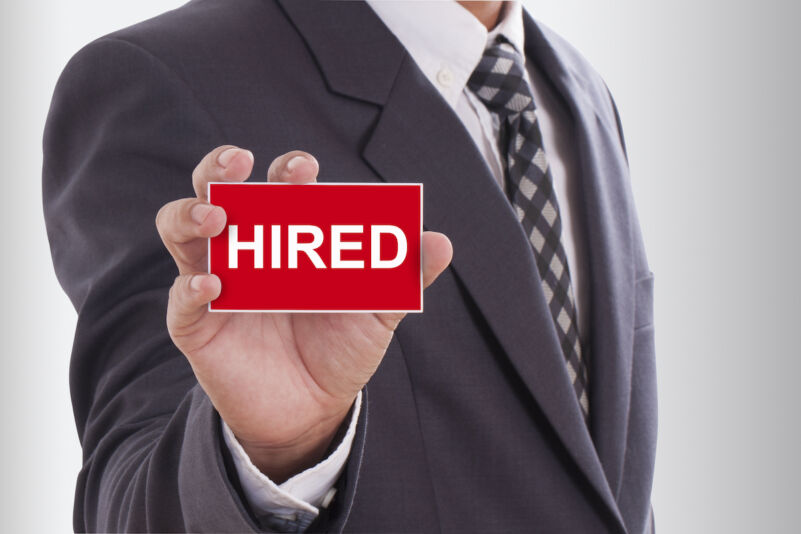You’re a founder of a start-up that’s beginning to scale up. You’ve achieved product market fit and raised significant capital. But it’s becoming clear that your current Executive team might not have the skills or aptitude to scale a business.
This is a hard realisation. I get it. It’s tempting to hope that people will rise to the next level. Sometimes it happens. Take our client Smartsourcing in the Philippines. Their General Manager and Director of Customer Experience started as PAs to the Founder, Mike Selfe. However, this doesn’t happen very often. Often, those first in lack the experience, intellectual curiosity and drive needed for scaling up.
It can be tricky to spot the right time to hire your next executive. So here are some indicators to watch out for that will tell you that leadership hiring is essential.
When preparing for significant growth or changes
Knowledge is power. Hiring executives is vital if you know you’re about to make a significant change or your growth is going stratospheric. We’ve coached clients in different-sized businesses that are scaling up fast for the last eight years. And they all hit the same challenges. Knowing what to expect, you can plan for these scenarios before they happen because one thing’s sure. They will happen.
Scaling-up isn’t linear. It’s exponential. And the challenges come thick and fast if you’re not ready for them. I’m intrigued by heuristics that add perspective to any topic. One relevant here is Hiroshi Mikitani’s ‘Rule of 3 and 10’.
Mikitani founded Japan’s largest eCommerce retailer – a business that expanded rapidly and exponentially. He noticed that systems and processes started to break as they hit specific points. And when he stepped back, he realised these things happened at multiples of 3 and 10. That’s an interesting observation I agree with from my own experience.
You build a business, and there are three of you. At ten people, everything changes. You get to thirty people, and it changes again. Same when you hit 100. At every one of these steps, everything breaks – communication systems, payroll, accounting and customer support. Formal processes need to be reviewed and restructured.
At these points, you’re likely to need to hire executives. At thirty people (or £3 million turnover), you will need a leadership team At 100, the CEO must give up their functional role and become a full-time CEO. It’s important to know that these inflexion points are coming and plan accordingly.
When current leaders say they’re ‘stretched thin’.
I get sceptical when I hear the words ‘stretched thin’. I think it’s a euphemism. It makes me wonder whether they struggle to fulfil the job’s requirements as your business scales.
Splitting roles is one of the mistakes we see happening as part of talent assessment. Let’s say the Head of Sales and Marketing is an excellent cultural fit but not performing in their role. So you decide to make them Head of Sales and recruit a new Head of Marketing. You end up with a sprawling leadership team and entrenched siloes.
Far better to confront the fact that you need someone new to head up both functions. An Executive team will be more effective with around five people. Yes, it may take a difficult conversation with the existing team members, but decisions like this will enable your business to scale quickly.
The sooner you get real about the abilities of your existing team and have some honest, sometimes difficult conversations, the better. Recently, I was talking to one of our CEO clients about his Executive team. They joined us a year ago, and at that point, I predicted that the CEO would fall out of love with his current team. Sure enough, he told me I’d been right a year later. He needed to consider leadership hiring to take the business forward.
In last week’s blog about the secrets of effective delegation, I talked about a sad situation I see happen often. The six founders sitting around the kitchen do not become part of the C-suite when the business scales to 300 staff. It’s a fact of life.
When new skills and perspectives are needed
As mentioned earlier in this blog, you need different skills and experience depending on the stage of scaling a business.
When you start, you must validate your business model and get through product market fit. The revenue needs to be stabilised before you scale further to thirty people. At this point, you need an Executive team, and then at 100 staff, you will need a new management layer. You’ll need to change all the processes and systems at each stage. If existing staff don’t have the expertise for this, you need to be hiring executives who do. Process transformation requires a specific skillset – people who can take an operating mess and do it more efficiently.
Executive hiring needs to be handled carefully, though. It may be the first time you’ve hired someone from outside. You need a systematic, robust recruitment process that includes references and psychometric tests. You’ll also need to understand precisely what you need.
Again, this is dependent on the stage of scaling a business. A Commercial Sales Director for a start-up will be very different to a Commercial Sales Director for an established business with more than 300 staff.
In the start-up, they’ll need to make stuff up as they go along. When it’s a grown-up business, all the complex process has been done. Instead, the Commercial Sales Director will work on commercial structures and partnerships – a different set of skills. Their focus will be on broadening and deepening.
What’s the message here? If you’re a start-up, don’t go hiring someone from Microsoft!
When transitioning from founder to CEO

At what point should you transition from founder to CEO? In our experience, you must have done this by the time your business hits 100 staff. And this is reliant on the right leadership hiring to support you. CEO should be your full-time job. Everything else should be delegated.
When you start, and there are six of you around a kitchen table, you’ll all wear various hats. At Peer 1, we joked that no one was allowed to have more than six job titles. If they did, we knew we needed to hire someone else quickly, as we were growing fast.
Between 30 and 100 staff, the thing that can hold companies back is the CEO hanging on to their old functional role. Full-time CEOs have two objectives – to create and sell the vision for the business. Anything else gets in the way. Don’t become the bottleneck that stops your business from scaling.
This is where my coaching support becomes invaluable. I help founders and CEOs to let go. With my support, they focus on what they must do to stay at the helm. Only yesterday, I was talking to an investor in a business that had sacked their CEO. This person couldn’t see the writing on the wall or get out of his own way. Until he lost the board’s support, he had no idea he was on thin ice. Stories like this are tragic.
So, get help to enable you to see your blind spots. Even Olympians have coaches. And make sure you get the right team to take your business to the next level.
Written by business coach and leadership coaching expert Dominic Monkhouse. Contact him to schedule a call here. You can order your free copy of his book, Mind Your F**king Business here.

